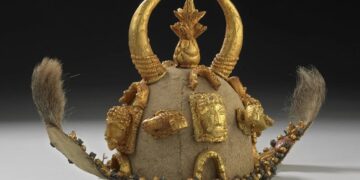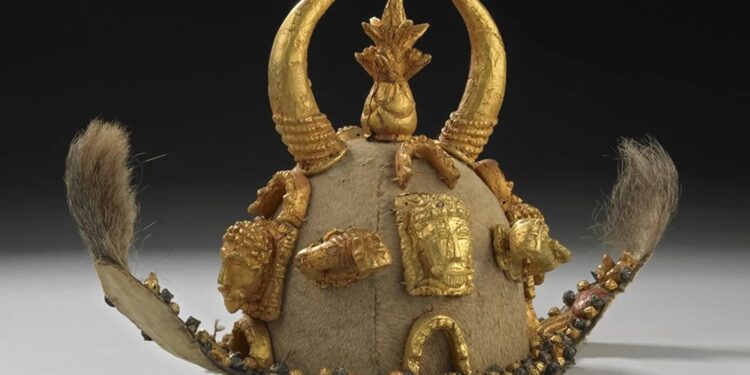By John Ikani
Looted treasures from the Asante kingdom are now at their rightful place in Ghana, a century and a half after British colonizers seized them.
Crowds gathered at the Manhyia Palace Museum in Kumasi, the heart of the Asante region, to celebrate the return of 32 cherished items.
“This day signifies a profound moment for Asante and the entire African continent. The shared spirit is restored,” proclaimed Asante King Otumfuo Osei Tutu II.
Presently, the items are loaned to Ghana for three years, with the possibility of extension.
The agreement involves two British museums — the Victoria & Albert Museum (V&A) and the British Museum —and the Asante king, rather than the Ghanaian government.
While the Asante king holds symbolic traditional authority, his kingdom is now integrated into Ghana’s modern democracy.
“Our dignity is reclaimed,” expressed Henry Amankwaatia, a proud Asante, amidst the jubilant drumming.
Contributing to the return, the V&A offers 17 pieces, while the British Museum provides 15.
The return coincides with the silver jubilee celebration of the Asantehene.
Some items, often referred to as ‘Ghana’s crown jewels,’ were looted during the 19th-century Anglo-Ashanti wars, including the notable Sargrenti War of 1874.
Additionally, other items, like the gold harp (Sankuo), were gifted to a British diplomat in 1817.
“We acknowledge the painful history surrounding the acquisition of these objects—a history marred by the wounds of imperial conflict and colonialism,” admitted Dr. Tristam Hunt, director of the Victoria and Albert Museum, who attended the ceremony in Kumasi.
Among the returned artefacts are the sword of state, gold peace pipe, and gold badges worn by officials tasked with purifying the king’s soul.
“These treasures have borne witness to the triumphs and tribulations of the great kingdom, and their return to Kumasi signifies the power of cultural exchange and reconciliation,” remarked Dr. Hunt.
One significant item returned, the sword of state, known as the ‘mpompomsuo sword,’ holds deep significance for the Asante people, symbolizing authority in the kingdom’s oath-taking ceremonies.
According to royal historian Osei-Bonsu Safo-Kantanka, the removal of these items from the Asante represented a loss of “a portion of our heart, our sentiment, our very essence.”
The artefacts’ return is both controversial and significant.
Under UK law, national museums like the V&A and the British Museum are prohibited from permanently returning contested items in their collections, resorting to loan agreements to facilitate repatriation.
Some nations claiming ownership of disputed artefacts fear that loans may imply acceptance of the UK’s ownership.
While many Ghanaians advocate for the permanent retention of the ornaments, this arrangement navigates British legal constraints.
African nations have persistently demanded the return of looted items, with some reclaiming ownership of significant historical artefacts in recent years.
In 2022, Germany returned over 1,000 Benin Bronzes to Nigeria, with the German foreign minister acknowledging it as a step towards addressing a “dark colonial history.”


































